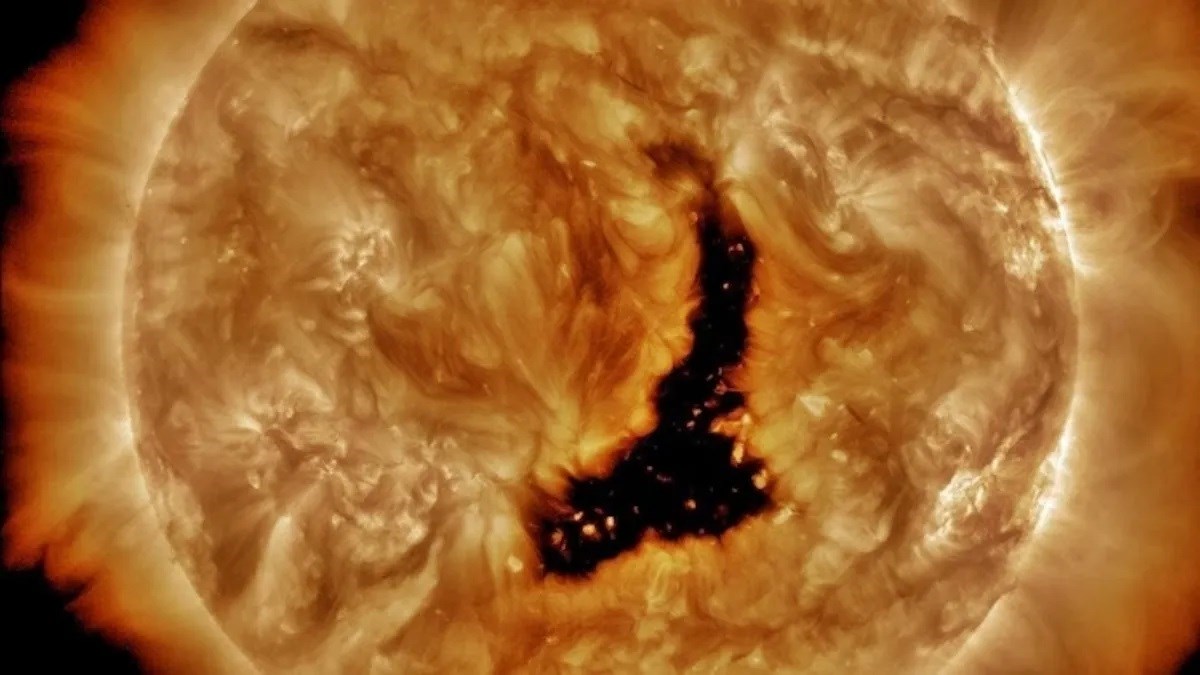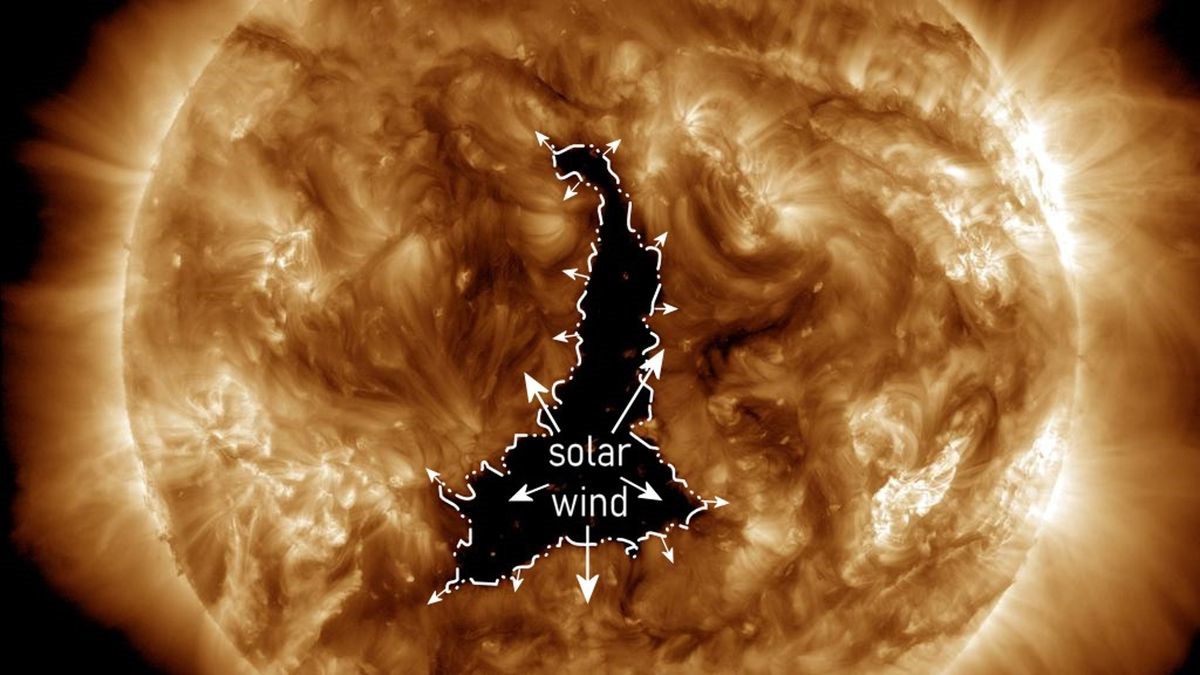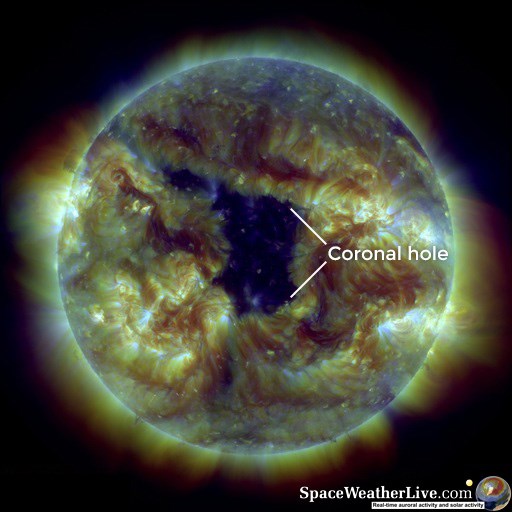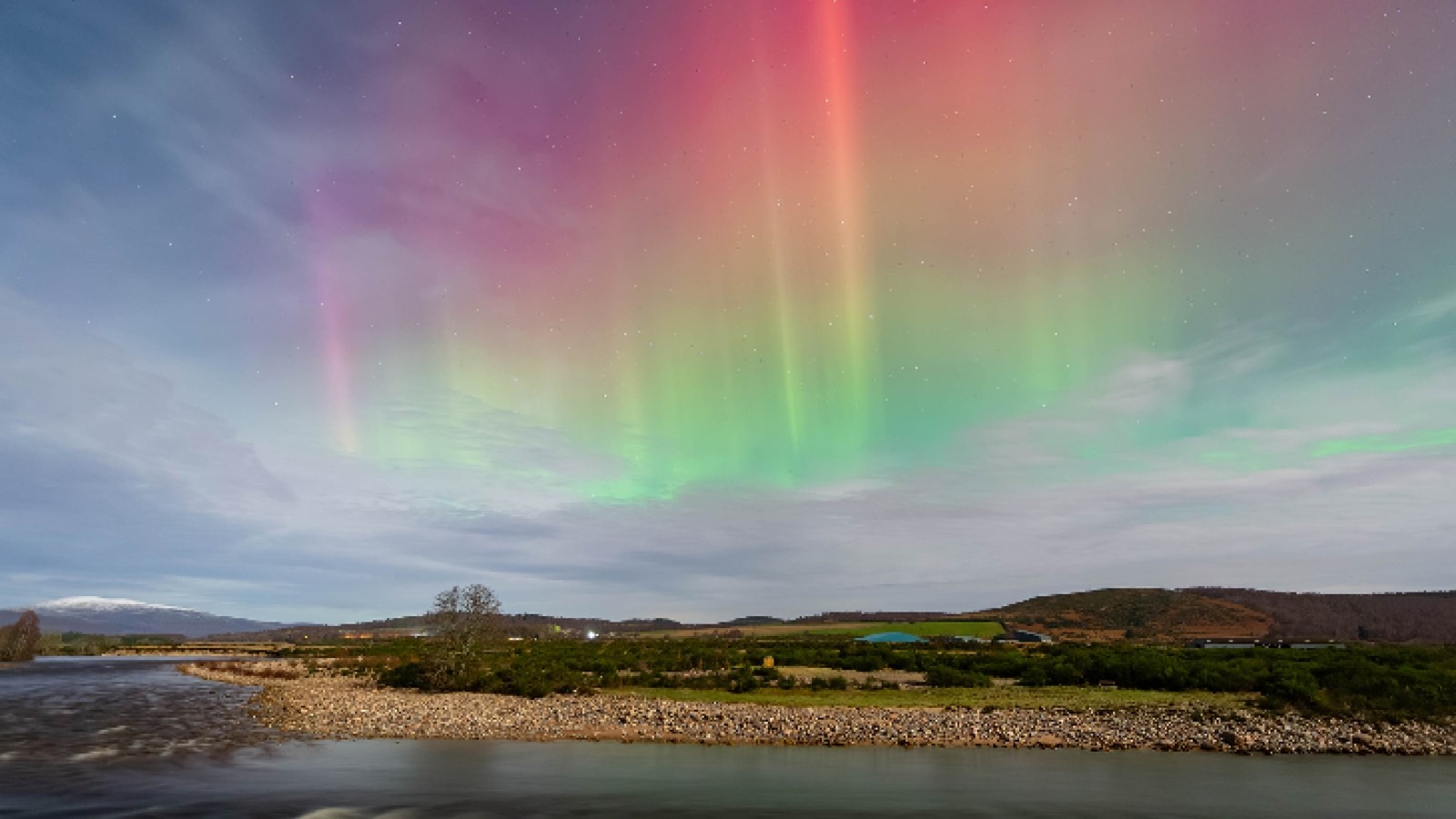 A huge dark region known as the coronal hole has recently emerged near the Sun’s equator. The temporal gap is blasting the unusually fast solar wind towards Earth. 60 Earths can fit into this dark region. Charged particles coming to Earth can cause Northern Lights and more serious problems.
A huge dark region known as the coronal hole has recently emerged near the Sun’s equator. The temporal gap is blasting the unusually fast solar wind towards Earth. 60 Earths can fit into this dark region. Charged particles coming to Earth can cause Northern Lights and more serious problems.60 Earths could fit in this region
 A massive black patch has formed on the Sun’s surface, blasting an unusually fast stream of radioactively charged rays known as the solar wind towards Earth. The size and orientation of the transient gap, which is wider than 60 Earths, is unprecedented at this stage of the Sun’s cycle, scientists say.
A massive black patch has formed on the Sun’s surface, blasting an unusually fast stream of radioactively charged rays known as the solar wind towards Earth. The size and orientation of the transient gap, which is wider than 60 Earths, is unprecedented at this stage of the Sun’s cycle, scientists say.According to reports, the giant dark region on the Sun, known as this coronal hole, formed near the Sun’s equator on December 2 and reached its maximum width of approximately 800,000 kilometers within 24 hours. This black part has been pointing directly towards Earth since December 4.
What is a coronal hole?
 For those who don’t know, let’s do a little recap and reinforce the concept of the coronal hole: The outermost layer of the Sun is called the corona, and the Sun’s magnetic field plays an important role in what we see in these images. Bright areas in these images indicate hot, dense gas captured by the Sun’s magnetic field. Dark and empty areas are places where the Sun’s magnetic field extends into space and these hot gases can escape. These areas have lower temperatures and densities than their surroundings, causing coronal holes to appear dark. Therefore, coronal holes are not actual holes in the Sun, but only appear as such at certain extreme ultraviolet wavelengths. When coronal holes are positioned towards the Earth, they can cause magnetic distortions on the Earth with increased aurora (Northern lights) activity. These should not be confused with typical sunspots because coronal holes are invisible except in ultraviolet light.
For those who don’t know, let’s do a little recap and reinforce the concept of the coronal hole: The outermost layer of the Sun is called the corona, and the Sun’s magnetic field plays an important role in what we see in these images. Bright areas in these images indicate hot, dense gas captured by the Sun’s magnetic field. Dark and empty areas are places where the Sun’s magnetic field extends into space and these hot gases can escape. These areas have lower temperatures and densities than their surroundings, causing coronal holes to appear dark. Therefore, coronal holes are not actual holes in the Sun, but only appear as such at certain extreme ultraviolet wavelengths. When coronal holes are positioned towards the Earth, they can cause magnetic distortions on the Earth with increased aurora (Northern lights) activity. These should not be confused with typical sunspots because coronal holes are invisible except in ultraviolet light.What will be the effects?
Experts initially predicted that this latest breach could lead to a moderate intensity (G2) geomagnetic storm, which could trigger radio blackouts and strong Northern lights for the next few days.
However, according to Spaceweather.com, the resulting storm is at G1 level so far because the solar wind is less intense than expected. However, it is still possible to see the Northern Lights at high latitudes.
 However, it is not clear how long this coronal hole will remain on the Sun, although previous coronal holes have lasted longer than a single Solar rotation (27 days) in the past. But in time, this hole will rotate to a different location from Earth.
However, it is not clear how long this coronal hole will remain on the Sun, although previous coronal holes have lasted longer than a single Solar rotation (27 days) in the past. But in time, this hole will rotate to a different location from Earth.According to NOAA, radiation streams from coronal holes are much faster than the normal solar wind and often trigger disruptions in the Earth’s magnetic shield known as geomagnetic storms. The last coronal hole in the Sun, which appeared in March, caused the strongest geomagnetic storm to hit Earth in more than six years.
Weird in every way
Solar activity continues to increase all year long as the Sun approaches the peak of the approximately 11-year solar cycle known as solar maximum. But oddly enough, the massive new coronal hole shouldn’t be part of this increase in solar activity.
Coronal holes can appear at any time during the Solar cycle, but they actually occur more frequently when the Sun is at minimum, according to NOAA. When they occur during solar maximum, they are normally found near the Sun’s poles, not near the equator. Therefore, it is a mystery how such a large hole opened near the equator when the Sun is so close to its maximum.
However, numerous other signs that the Sun is becoming more active have emerged over the past few weeks. A massive “Sunspot archipelago” consisting of at least five different sunspot groups appeared on the Sun’s near side on November 18, and has since spewed dozens of solar storms into space. On November 25, an explosive “canyon of fire” eruption near the Sun’s equator released a coronal mass ejection (CME) that subsequently struck Earth and triggered rare orange aurorae. And on November 28, a “nearly X-class” solar flare occurred, creating Northern lights in lower latitudes.
These increases in solar activity are likely a sign that we are on the verge of solar maximum. In October, scientists revised their solar cycle predictions and now predict that the final peak could begin as early as 2024.